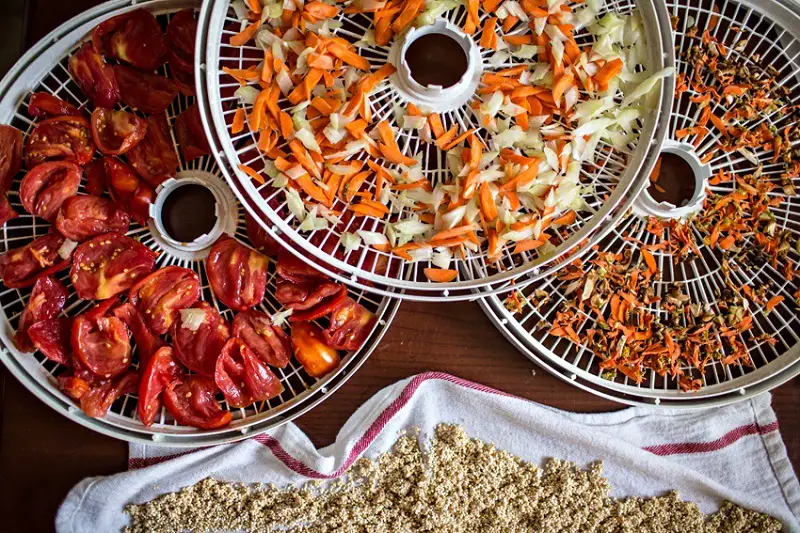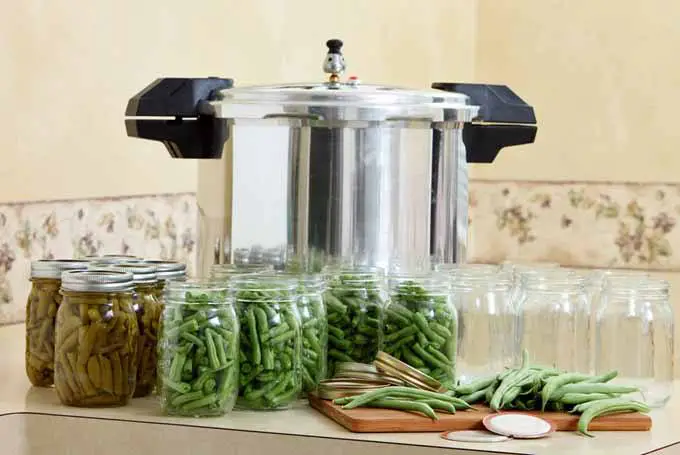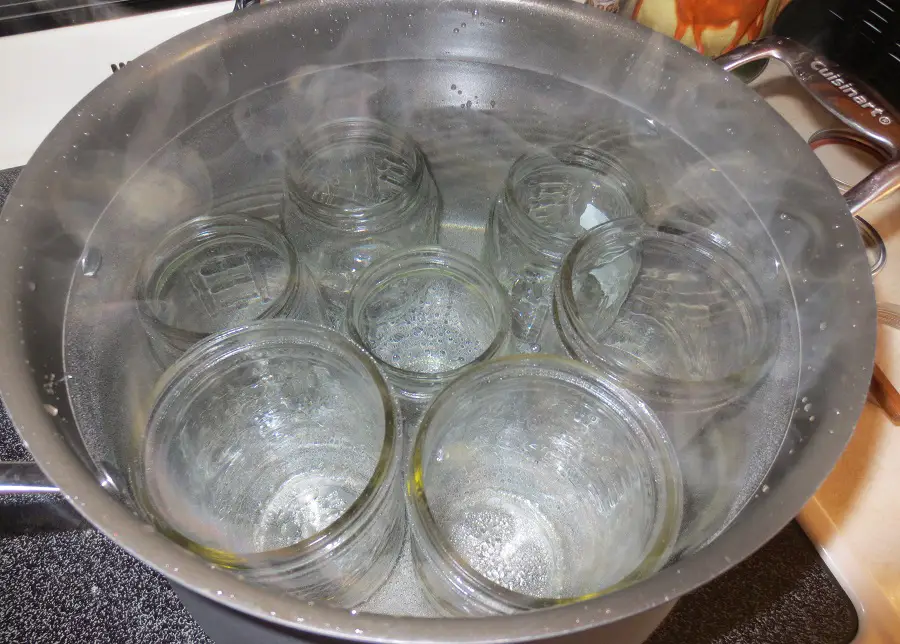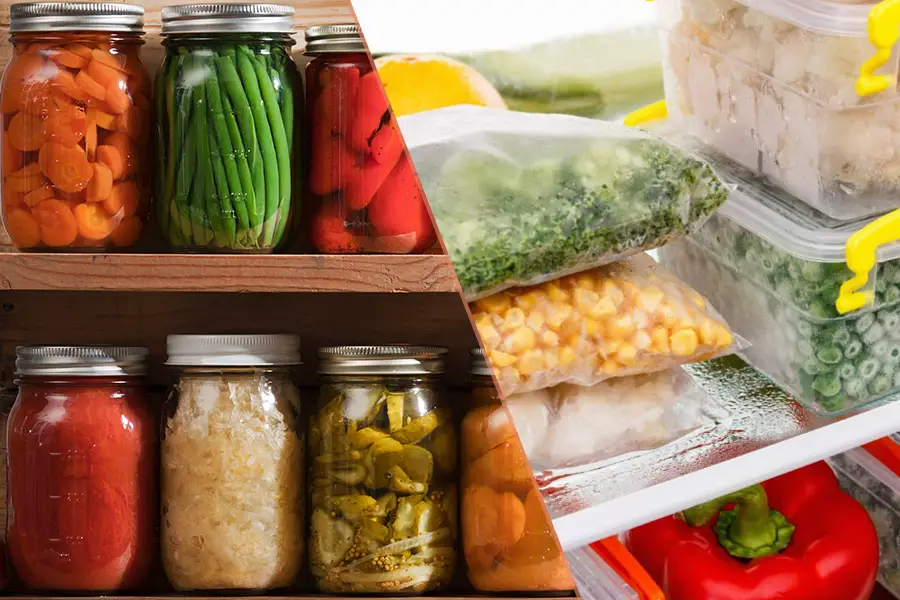A food dehydrator is an oven-shaped or stackable shaped heating system that’s used to maintain the quality of your food. When using a food dehydrator, you have to ensure that your food is placed in correctly so that the heat will evenly dry it out.
Food dehydration is a preservation process where the food is preserved for extended periods of time by taking the moisture out of it. Doing so prevents the growth of mold, bacteria, and other organisms that can cause potential harm to your food.
Once dehydrated, the food can be eaten or rehydrated again. Taking out the moisture can be an extensive process that takes several hours to complete. Dehydrated foods weigh less, have an irregular shape (due to dehydration), and might change color.
How Do Dehydrators Work?
To successfully dehydrate your food, you’ll need an automatic shutoff timer, heating element, and an adjustable thermostat nearby. Also, use a back mounted dry fan to dry your foods evenly.

Various temperatures are needed for the food to become dehydrated. The heating element works by regulating the room temperature so that the food can optimize its dehydration. With the automatic shut off timer, you can run the dehydrator overnight as it will turn off once it’s finished.
Dehydrating food not only saves you money but also increases the quality of your food in the long run. To check your food for quality, inspect your food weekly for a few weeks. If done correctly, dehydrated food has a shelf lifespan of up to 20 years.
What Is Average Food Dehydrator Temperature?
On average, food that’s dehydrated has a temperature range in between 95-145° Fahrenheit. As a rule of thumb, the meats have to be dehydrated more than vegetables due to their increased mass and to prevent bacteria growth.
Air circulation and temperature have to be consistent to ensure that the dehydration process works correctly. But, you should not exceed the drying temperature when undergoing this method.
Food dehydrator temperatures that are around 150-200° or higher is not recommended. Doing so will result in uneven drying. This means that the moisture will be unevenly distributed as the food will have a moist interior, but a dry exterior. Make sure you keep your temperature at a balanced level to keep your food safe from outside bacteria.
Benefits Of Food Dehydration
Having a food dryer allows you to preserve the vitamins and minerals of your food as if it was fresh. It gives you a great addition of nutrients, concentrated flavors, and enzymes. These are the most common benefits you’ll experience once you invest in a food dehydrator.
Cost Effective
Dried food is sold at a higher price than regular food in stores. Having a food dehydrator allows you to preserve nutritious, fresh foods at home for a fraction of the price. As we stated previously, the shelf life of dried food can last up to two decades.

You can add your favorite grapes, pineapples, strawberries, or apples with nuts in order to create a trail mix. Or you can create beef jerky out of poultry, pork, and beef. Banana chips are a good example of dehydrated foods, as it takes up 3-5% of its moisture content. Get a food dehydrator as it will save you money in the long run.
Waste Reduction
In the United States alone, we waste up to $165 billion dollars on food annually. With a food dehydrator, you can preserve the life of food that’s close to spoiling. If your food starts to have a soft texture, place it inside of the food dehydrator.
Or, if you have meat that has to be cooked, use the dehydrator to make some jerky. This is a great method that helps you preserve fruits such as bananas before they start to turn brown. Place them in the dehydrator, slice them up, and use them for later!
Natural Taste
When you buy snacks or other dehydrated foods, you don’t know what’s inside of it. There is a myriad of preservatives and additives that are placed in processed foods before its consumed. While the preservatives extend your food’s shelf life, they alter the natural taste of it as well.
Sugar is a common preservative that’s used with fruit. With a food dehydrator, you can have control over what you add to your meals. You don’t have to worry about chemicals or reading long ingredient lists. Instead, you can dehydrate your favorite ingredients and have them as a snack when you’re on the road.
Types Of Food Dehydrators
Here are the two most common food dehydrators that you’ll find in today’s market.
Horizontal
Horizontal flow dehydrators work like a traditional oven as its heating source is located in the back. While they are more expensive than vertical models, they are known for dehydrating foods evenly.
You should get a horizontal flow dehydrator if you want to dehydrate meat and make beef jerky. Also, its the easiest dehydrator for beginners to use. You only have to turn it on, place it at your desired setting without having to do extra work until your food is done.
Vertical
Vertical flow dehydrators consist of a heat source that’s located on the top or the base of the dehydrator. People tend to get vertical dehydrators because they are more affordable. However, they are unable to transfer heat throughout the food uniformly.
Fortunately, most vertical food dehydrators have a fan to assist users in this process. While they are better suited for fruits and vegetables, you won’t be able to create a good beef jerky unless you apply manual effort and switch the trays around during the heating process.
Conclusion
Now that you know the mechanics behind a food dehydrator, you should take some time researching the best one for your needs. We have a buying guide that will help you find the most valuable and useful dehydrators that are available.

Food dehydrators are a great source of food protection. Once you buy one, you’ll be able to care for your food and keep it lasting past its usual shelf life. Thus, you should look into getting one if you’re ready to maximize the quality of your meals.
Resources:TheBalanceLiveStrong




